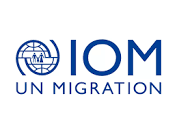This project was done in partnership with the African Union, ILO, IOM as part of the JLMP initiative. A newsletter series was also developed as a part of the community engagement strategy. The objective was to highlight existing and missing narratives in media coverage of labour migration stories in Africa. It highlighted success stories of how Africa is managing migration, not forgetting the challenges.
Activities for this project included:
A four-part newsletter series
The newsletter for this project was presented in a four-part series and their summaries and links to the downloadable pdf versions can be found below.
Labour Migration Newsletter #1: Africa has a long history of migratory movements. The movements, both voluntary and forced, have shaped intercontinental relations, economic cultures and cultural dynamics. In this issue, we look at; Existing labour migration policies and whether they ensure safe migration within Africa. What it takes to report effectively on labour migration in Africa. Find the link to the downloadable pdf here
Labour Migration Newsletter #2: Migrant workers and the pandemic: Migrant workers have been significantly affected by the COVID-19 pandemic. Disruptions in hospitality and tourism, agriculture and informal sectors have left migrant workers without an income, with a July 2020 report by the African Development Bank stating that up to 25 million Africans lost their jobs. Find the link to the downloadable pdf here
Labour Migration Newsletter #3: Has media failed labour migrants? The way society sees and treats labour migrants is shaped by many forces, including journalism. The media people consume, whether it is traditional media or digital media in the form of social media, can reinforce or challenge dominant views on labour migration. While representing stories on labour migration, journalists report from their own perspectives and judgments towards migrants. Acknowledging this bias is the first step in correcting negative portrayals that feed stereotypes of labour migrants. Find the link to the downloadable pdf here
Labour Migration Newsletter #4: Automation and the future of work: Labour migration in Africa is closely connected to industrialisation. As more tasks and economical activities are automated, replacing humans with robots and artificial intelligence, labour migrants will face various vulnerabilities. Moreover, increased competition in the countries’ labour markets is likely to affect perceptions towards migrants. Find the link to the downloadable pdf here
Research on the lived experiences of journalists covering Labour Migration in Africa– The research asked:
- What are the perspectives of media editors on the coverage of labour migration?
- What are the demographics of journalists covering labour migration?
- What are the lived experiences of women journalists covering labour migration in Africa?
The Labour Migration Reporting online Training Online Programme was self-paced with live webinar sessions with the consultants every week. The call for entries received 134 entries, and 100 journalists were selected for the one-month training. The five courses that were developed were as follows:
- Reporting on labour migration policy and impact
- Understanding human and labour rights of migrant workers.
- Labour migration 101 for journalists
- Covering migration during health pandemics (focused on how to identify stories)
- Ethics and coverage of labour migration, including using the right vocabulary.
Check out the courses on AWiMLearning
The Labour Migration Media Award was a media award to celebrate African Journalists reporting on labour migration in Africa. The call for the entries received a total of 78 entries under the following categories:
- Migrants’ Rights.
- Remittance and Diaspora Contributions to Development.
- Governance of Labour Migration.
- Gender-based Migration.
- Economic Impact of Migration.
- Migration and Health.
- Intra-African Migration.
- Fair recruitment, forced labour and human trafficking of migrant workers.






